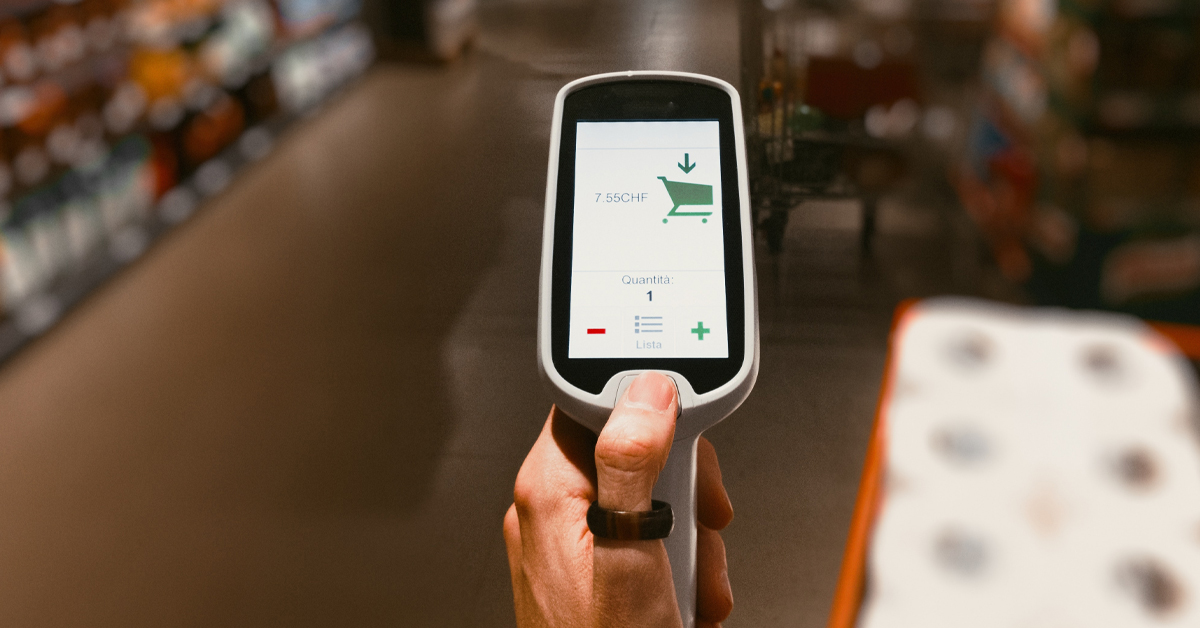Before we dive into retail automation, it is important to acknowledge how retail is a massive industry that is now under pressure.
The shift to e-commerce and the COVID-19 outbreak has created a strong market for e-commerce
resulting in the disappearance of several brick-and-mortar retail outlets.A customer setting foot in a retail outlet expects impeccable service, similar to the one received through online stores. Therefore, a retailer should have a well-maintained facility and superior customer service.
This is only possible if technology like workflow automation is in place.

Automation is a term for anything you set on autopilot.
You set specific parameters that determine when a specific action should take place. If the conditions are met, then the systems and tools will automatically kick off the next steps.
Retail automation leverages technology to streamline manual, repetitive processes that take up too much time. It’s the principle of automating, simplifying and removing as much low-value manual work as possible from the employee workload.
Table of Contents
Why is automation a demand, not an option?

After a year of turbulence and cost-cutting, retailers are stretched to the limit in terms of resources, but the one thing that they have in abundance is data.
Retail automation runs on data. Automation makes it simple to access and use the data available to improve operations and in-store experience.
It helps retailers work smarter and fuels continuous improvement.
Benefits of retail automation brands should not overlook

We listed down a few benefits of retail automation for rapidly scaling brands, but there are quite a few more.
1. Cut costs
Retail automation typically handles tedious, repetitive tasks. This will likely help improve job satisfaction, which could, in turn, reduce turnover rates and the expenses associated with filling those empty roles.
2. Enhanced efficiency
Automation, in retail and across other industries, saves you time. A few use cases should help you understand.
- Maintain around-the-clock, always-on business operations even if no one is physically working.
- Reduce the amount of time between tasks, since you’re not waiting on a human to authorize the next step.
- Keep things moving. Even if someone calls out sick or is busy with another task, automation can keep operations running smoothly.
- Automation can limit the number of tasks needed to complete a workflow, reducing or eliminating steps altogether.
3. Improved customer experience
According to Forrester, 77 percent of consumers say that valuing their time is the most important thing you can do to deliver a positive experience.
Automated customer support, personalized marketing automation and quick order fulfillment are just a few ways this technology elevates the customer experience. If you are a high-growth brand and your customer base is constantly growing, automation easily scales up to meet your needs, regardless of volume.
These days consumers demand consistency across all channels. Retail automation can help you accomplish that by setting up workflows or guidelines. This will ensure that customers have the same experience each time rather than a different one depending on the customer support specialist they’re in touch with.
4. Better sales
More customer satisfaction typically leads to more sales. Retail automation helps drive sales in a more proactive way as well.
For instance, automated email sequence targets customers who are interested in a specific type of product on your site. These personalized offers and promotions are likely to be far more effective than a generic one sent to your entire list. In fact, 64 percent of consumers want personalized offers from retail brands.
5. Improved growth
Automating workflows across your business will enable you to focus on optimizing processes for growth instead of building new ones. Digital brands need to be creative in their approach and this means flexible workflows and automation that allow for fluctuations.
6. Safeguard your business
Retail automation can protect your business is by proactively detecting fraud. This is huge: Fraud is the top concern for retailers, according to the National Retail Federation. And it’s on the rise — online fraud especially. And another study found that 70 percent have machine-learning analytics very high on the priority list for fraud mitigation investments.
You can train your software to send you an alert or require further identity verification for orders deemed high-risk. You can establish high-risk orders based on order value, browser location or shipping location among others.
7. Reduced human error
62 percent of manufacturers still use pen and paper to track their processes, according to one survey.
Moving to automated retailing processes can improve your data quality and mitigate errors.
Rapidly scaling brands rely on data intelligence. Being able to glean insights from your business metrics, and implementing them for growth opportunities is critical in a data-driven economy.
Automation also means data is readily available. You do not have to manually update spreadsheets, automation keeps data up-to-date in real-time. You can even automate the retail reporting process. This will help keep everyone on the same page, by distributing the same data across teams internally.
Automation use cases retail stores are banking on

Many business operations and processes can be automated. And here’s how!
1. Warehouse management
Robots maximize warehouse space by allowing you to reach new places and organize products in such a way humans wouldn’t be able to. Plus, they are more efficient than humans when it comes to pick, pack and ship. You can also build automation that fulfill and route orders based on product availability and customer location. This ensures the fastest and most affordable shipping options. Amazon and Walmart have been leveraging these for several years.
2. Inventory management
Automation works on the inventory side of things such as automated purchasing systems, changes in product demand and low stock alerts. Automated product reporting is especially valuable for high-growth brands. This helps you identify top sellers and revenue opportunities to build upon your growth.
3. Marketing
Consumers are demanding personalized interactions and promotions from brands. Automation can help you tag customers with specific attributes and automatically trigger marketing campaigns based on the actions they take. For instance, if someone hasn’t made a purchase in 6 months, you can create an automated push notification to remind them that it’s time to go shopping again!
4. Accounting
You can automate financial processes both on the accounts payable and accounts receivable side. For cash inflow, automated billing and payment processing keeps money coming in and prevents customers from waiting. When it comes to outflow, you can automate invoice and purchase order payments to avoid delays in your supply chain.
5. Multi-channel management
If you’re a high-growth brand, chances are you’re selling on more than one channel. This could be your online store, wholesale, pop-up shops, third-party marketplaces or even social selling. Multi-channel inventory management is crucial. If stock levels aren’t automatically updated across channels, you run the risk of out of stock situations and falling short of customer expectations.
6. In-store automation
Customer-facing automation is also invaluable to your business for reasons for more than one. Lowe’s introduced an in-store robot, LoweBot, to help customers with wayfinding and product information.
CaliBurger has a hamburger-cooking robot on the payroll, San Francisco has a completely robotic coffee shop Cafe X and Walmart is using them to help keep floors clean.
The self-serve trend is also picking up and we’re talking about self-checkout, kiosks and vending machines.
Some examples of self-serve are Redbox kiosks or the consumer electronics vending machines becoming airport staples.
Amazon Go is one well-known and completely automated retail store, Greenfire in Seattle popped up with the same cashless premise and Carvana has turned car-buying into a trip to the vending machine. Walmart has introduced self-serve “lockers” where customers can pick up their online orders.
E-commerce stores can leverage chatbots to respond to customer queries before directing them to an appropriate human. Chatbots are able to answer common queries without even getting an actual person involved.
Hardware used for retail store automation

Some commonly used devices that have made automation in retail stores a reality range from touch POS terminals to info kiosks. Let’s list down other hardware solutions making retail operations seamless in 2021.
- Shelf-edge labels
- Self-checkout terminals
- Shelf scanning robots
- Automated backroom unloading
- Electronic shelf labels
- Automated retail vending machines
- Label printers & compact labelers
- Touch POS terminals
- Mobile POS
- Info kiosks
- Vision AI cabinets
- Secure lockers
Retail automation solutions and strategies
No matter how tech-savvy a company is, people will remain its driving force. So how does the future workforce look like or how to create one?
1. Transforming the ways of working
Retail automation brings new capabilities into the business and with it new employee responsibilities.
For example, robots with shelf scanners can take care of most store managers’ tasks. And the workers can switch to other, more important errands like assisting customers or checking online orders.
To fully benefit from automation in the retail sector, businesses should adopt an agile method of working. This means moving from strict hierarchies to working in teams with end-to-end accountability.
2. The redeployment of the workforce
By introducing technology, retailers create a bank of hours with highly qualified employees, who can then distribute some of these hours to more valuable tasks.
For instance, Best Buy, a consumer electronics retailer, created new customer-service roles. The company focused its attention and investments on In-Home Advisor and Total Tech Support, reskilling and deploying employees for them.
3. Prepare for skilling and reskilling
Retail process automation totally reshapes activities, skills and their demand. The need for physical and manual skills declines, while the need for tech, social and emotional ones grows. Reskilling takes effort, yet it offers a higher return on investment. It saves HR the time needed to find and recruit new workers.
Retail giants like Walmart partnered with Guild Education, Bellevue University, Brandman University and the University of Florida for reskilling its employees for better and more enhanced roles.
Challenges in retail automation
With something as all-pervasive as automation in retail, there are bound to be some challenges.
- Retailers need to be geared up to train their staff on a large scale to use some of these systems successful. For larger brands with multiple outlets, it is necessary to roll out these changes at the same time so that no employee is confused and no customer dissatisfied.
- Most machine learning algorithms are still vetted by actual people for accuracy, which might seem to defeat the point of automation.
As for fully automated stores, would robots replace humans? That is highly debatable since for many customers a store is a chance to experience the brand, so much so that even Digitally Native Vertical Brands are finding ways to open offline stores. Store staff and good store staff at that are an essential component of the offline retail experience.
How retail automation supports a sustainable future of growth for brands?

Automation is here to redefine and restructure retail businesses. This has created organizations with fewer layers and a better trained and trusted workforce empowered by real-time data and analytics.
Amazon made headlines with its Amazon Go retail concept. The company now operates ten Amazon Go stores, in three US cities, and the tech giant has ambitious expansion plans: 3,000 stores by 2021.
Kroger Edge’s digital shelves that display prices, nutrition facts, coupons and video advertisements and plans to link the shelves to shoppers’ smartphones, allowing an increased level of personalization.
Target and Walmart have invested in autonomous cleaning robots that save hours of its associates’ time.
On the marketing side, retailers must go all out to carve an identity for themselves to keep customers coming. At the operational level, they have to raise efficiencies, service levels and quality of experience. And in automation, they will find many answers.
[mailerlite_form form_id=1]
















